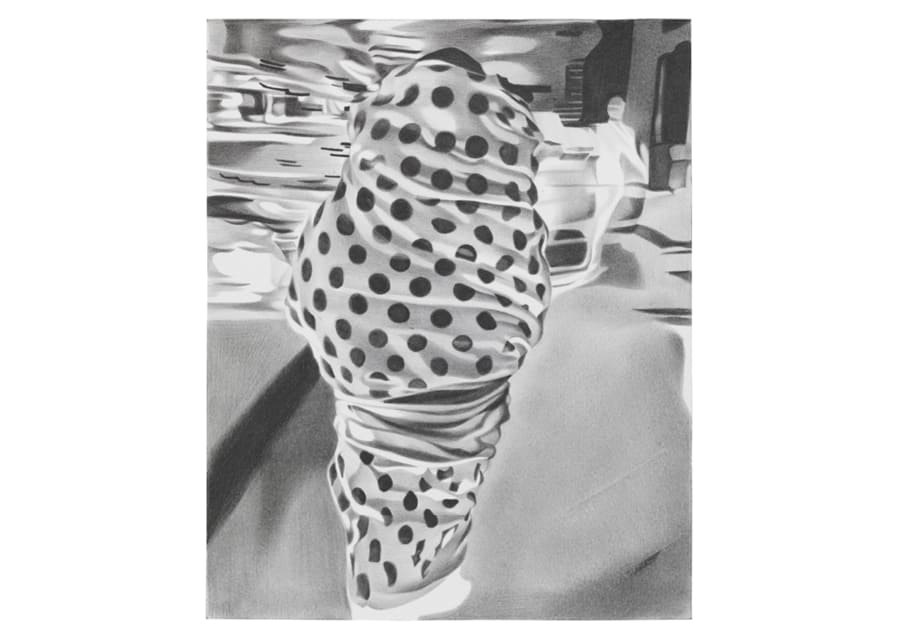Marc Brandenburg Hirnsturm II
“Hirnsturm,” or “brain storm,” could be a flood of inner images that shoots through one’s head in extreme states, as when one is intoxicated or in shock. Hirnsturm II, the exhibition of Berlin artist Marc Brandenburg, translates this inundation into a spatial experience. In the show’s main hall, which is bathed in black light, visitors walk through a swirl of drawings inverted into the negative. The drawings seem to float in a black void like fragmented perceptions or cinematic sequences.
For over twenty-five years, the artist, born in 1965, has been capturing everyday, ephemeral motifs on strolls through Berlin, London, and Barcelona, including costumed demonstrators, garbage, graffiti, plastic toys, advertisements, and places where homeless people sleep. The images, which Brandenburg first photographs, then edits on the computer, and then draws freehand, often show friends and acquaintances from the Berlin scene, whom he has portrayed repeatedly for decades. He deliberately tries to keep the process of drawing as mechanical and cool as possible and to avoid expressive gestures, something like a signature style. In doing so, he discovers beauty in social conditions that are increasingly becoming the object of exclusion in our society: the sensitive, the endangered, the traumatized, the precarious.
Brandenburg, who is self-taught and entered the professional art world in the early 1990s laterally from the fashion and club scene, takes the perspective of a German, gay “person of color” in his work, examining his immediate surroundings. Almost like a diary, the flood of images documents a life that takes place primarily in a white, German context. Hirnsturm II reflects the torrent of images in pop culture and the compulsion to inwardly process the overload of these images.
The second part of the exhibition is the video installation Camouflage Pullover (2018). It picks up on a knitted work created back in 1992, Camouflage Sweaters for Foreigners. In creating this work, the artist was influenced by the racist riots in Rostock-Lichtenhagen as well as the police violence against the African-American Rodney King and the subsequent riots in Los Angeles. For Camouflage Sweaters, Brandenburg developed wearable models for which woolen heads and hands in a variety of “skin tones” were knitted onto found sweaters and worn by performers in Berlin parks and streets. Brandenburg staged little, plotless situations—a picnic, strolling around, waiting on a park bench—with the exclusively male figures, which stereotypically suggest “white men” and “people of color.” His video shows the bewilderment of the passers-by. In other segments, the “white” actress Nicolette Krebitz puts on a “black” mask and the dark-skinned director of Kunstraum Potsdam, Mike Gessner, dons a “white” one to demonstrate that underneath the masks are people of different ages, genders, skin colors, cultural backgrounds, and sexual orientations.
With Camouflage Pullover, Brandenburg proposes a more ambivalent, fluid concept of identity. In their perplexing speechlessness, the masked actors not only convey surreal moods and strangeness. They also embody the state of limbo of society, which is just beginning to deal with systemic racism and the colonial past. The uncertainty they exude is also, in a way, a projection—making us wonder what it would be like to be stuck in this wool skin for a moment, at the mercy of our own gazes and judgments.

























































































































































































